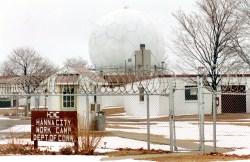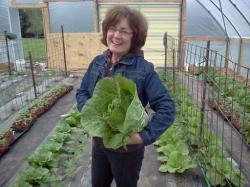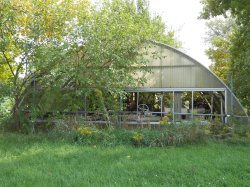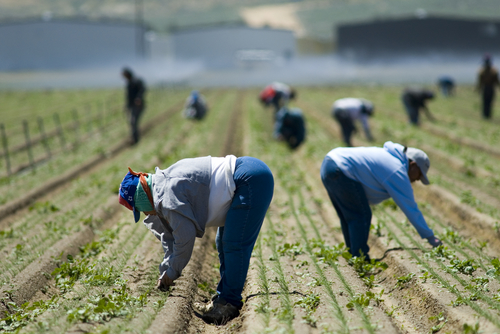
Matt Dayhoff / Journal Star The former Hanna City Work Camp stands deserted in 2003 near Hanna City.
It’s not every day that a former prison work camp is given new life as a place to grow food. But that’s exactly what’s happening in Peoria, Ill., where Hanna City, the shuttered facility that was also once a home for delinquent boys and a 1950s Air Force radar base, is being reborn as a food hub and farm incubator site.
The 40-acre patch of land is growing on local sustainability supporters, who believe it could be easily transformed into a farm training center and production location, helping to boost the local economy and supply food to the region’s vast food deserts.
Closed in 2002 for budgetary reasons, the state signed the prison camp — complete with a greenhouse and pristine farmland — over to Peoria County in 2008. But the gift came with conditions and strict instructions; Hanna City can’t be developed or sold. And, if rejuvenated, it must be done for public use only. Also, since it remains an active radar center run by the FAA to track aircraft, nothing metal can be built close by.
John Hamann, the county’s rural economic development director, says the county has considered giving Hanna City back to the state.

Anne Patterson envisions a farm and food hub that utilizes hoop houses like the one she’s posing in here to grow food in the cooler months.
“Some of the buildings are falling apart. And inside, it looked as though everyone decided to just up and leave. Papers were still on desks, dishes were on the tables, and pairs of bowling shoes [the camp had a bowling alley for recreation] were left sitting out and untied, like someone just slipped them off,” Hamann says.
It was, as some county officials have admitted, a pretty crappy gift.
That is until Mary Ardapple got her hands on the place. Long interested in food, Ardapple, a Peoria County board member who owns a local bakery, was inspired to re-envision Hanna City after she took a trip to Pennsylvania’s Allegheny County, where organic food farms dot the landscape.
“I thought, ‘why not in Illinois?’,” Ardapple recalls. So she brought her ideas to the board. Meanwhile, Anne Patterson, owner of the nearby 86-acre Living Earth Farm, confirmed the potential in the healthy soil beyond the facility’s barbed wire fence.
Illinois residents spend $48 billion a year on food, 90 percent of which comes from elsewhere. While the state has an estimated 27 million acres of farmland, soybeans and corn make up the main crops. Once a hub for vegetable, fruit, meat, and dairy production, few such farmers remain. A new crop of farmers, and a food hub to help with distribution, could help shift the local economy — even if they only produce 10 percent more of the area residents’ food.
Moreover, the area is home to many state institutions (universities and government agencies) that will be asked under the Illinois Food, Farms and Jobs Act to source at least 20 percent of their food locally by 2020, creating a great demand for food hubs.
Hanna City, in Patterson’s vision, would be one of a growing network of planned food and farming hubs in Central Illinois (the neighboring town of Galesburg’s Sustainable Business Center and the Edible Economy Project also hope to help transform the local food scene in the state).
In January, the county board — with further local input — will decide how Hanna City will be transformed. As Ardapple sees it, a farm could only benefit Peoria, a small but vital city that has experienced a cultural boom in recent years. Farm-to-table restaurants, river recreation, art festivals, and planned loft housing in the city’s warehouse district have made Peoria a weekend getaway for both Chicago and St. Louis residents.
Climate change, county officials say, also has farmers statewide rethinking the way they grow food. Some have adopted the practice of planting cover crops, while others are considering specialty crops and adding hoop houses for year-round production.

A preexisting Hanna City hoop house.
In one scenario, Hamann imagines some of Hanna City’s acres being leased to county residents who may want to switch careers and take up farming. “They could farm at Hanna City for two seasons to see if it’s what they like,” he says. Patterson extends the vision, suggesting the old work camp may also eventually be open nationally to anyone who wants to learn how to farm.
After all, access to farm acreage is one of the biggest challenges for today’s young and beginning farmers. And Patterson hopes Hanna City appeals to “young people from across the nation who are looking for a different type of career and looking for land.”
Beets, goats, bees, cheese. The possibilities are many on what Hamann says might be “the most unusual use of former prison land in the country.”




